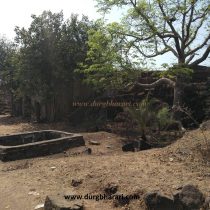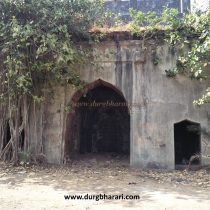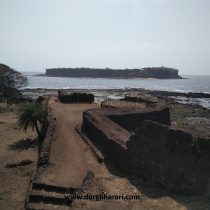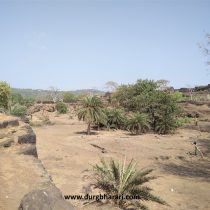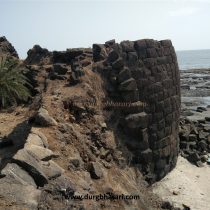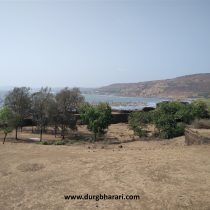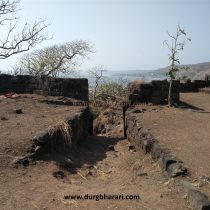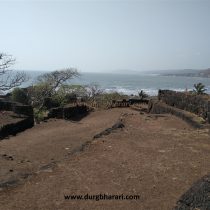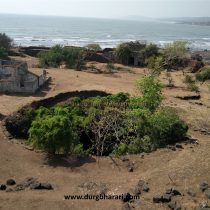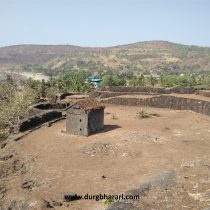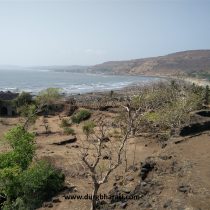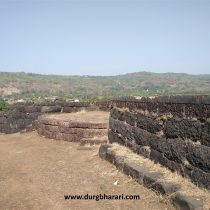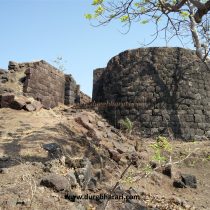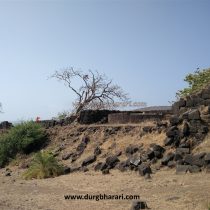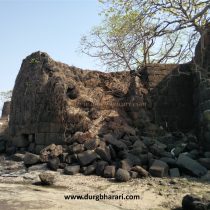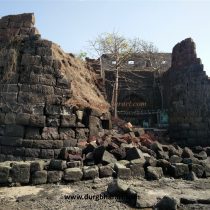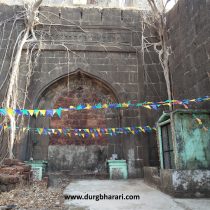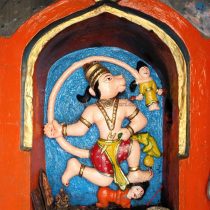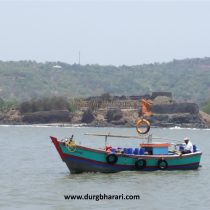GOA-HARNE
TYPE : COASTAL FORT
DISTRICT : RATNAGIRI
HEIGHT : 0
GRADE : EASY
Goa (Harne), Kanakdurg, and Fattegad forts were built on the coast to increase the permeability of Suvarnagad which is in the sea near Harne port. Of these, Goa fort is much huge than Kanakdurg and Fattegad and still stands in good condition except for the ramparts. The distance from Mumbai to Murud Harne via Dapoli is 230 km. The fort is located at a distance of about one km from Harne village and the east-facing arched gate of the fort is on the way to Harne port from the village. Situated on about 5 acres, the fort is surrounded by the sea on three sides and has a total of 14 bastions. The fort has two gates, one on the land side and one on the seaside. The main gate of the fort is on the seaside and is closed with stones on the inside. So you should first go down to the sea on the right side and see this gate from outside.
...
There is an idol of Maruti on the right side of this door built between two bastions. On the left side of the door is a sculpture of Gandabherud and four elephants in his feet, while on the right-hand side is a rare sculpture where 3 dogs are holding each other's necks in their jaws and two elephants on their feet. These elephants have caught the tails of other elephants with their trunks. Once you see the sea gate of the fort from the outside, you should enter the fort through the gate facing the land. Upon entering the fort, you can see the citadel built on a hummock on the left. This north-facing gate of the fort was used as the main gate. There are large porches on the inside of this door and there is a domed construction on the inner side of the door. Steps are leading to the rampart on both sides of the gate and you can climb the fort and walk around the entire fort from here. There are steps to climb the ramparts at some places while walking along the rampart to the western ramparts of the fort. From here, you can reach the citadel on the fort. As the southern part of the fort is about 30-40 feet higher than the other parts, this part is separated by a wall and transformed into a citadel. Stairs were built to enter the citadel and there was a door to enter the fort on the upper side of these stairs. The pillars on both sides of this door are still standing today, but the arch has been destroyed over time. On the lower side of the citadel, there is a large deep pond of circular shape with perennial water. But due to lack of use, bushes have grown and the water is completely mossy. Adjacent to the lake is the remains of two buildings without a roof, one large and the other small. One of the buildings is a collector's residence and the other is for ordinary Britishers. The steps leading to the fort made you realize how important this fort was to protect the Suvarnadurg while climbing the fort. Although it is not known exactly when the Harne fort was built, the main gate of the fort by the sea and the sculptures on it must have been built before Shivaji Maharaj’s period. The gate on the north side of the fort was probably built during the Adilshahi period. The gate facing the land was built in recent times to make it easier to get in and out of the fort after its strategic importance. During the reign of Shivaji Maharaj, this fort was captured along with Suvarnadurg and then was repaired by them. In 1754, Angre's fleet attacked three Dutch ships near Goa fort. Two Dutch ships were burnt down and a third was destroyed, while some Angre ships were burnt. Goa Fort was one of the four forts of Angre conquered by Ramaji Mahadev around 16th April 1755. According to the treaty signed between the Peshwas and the British in 1755, this fort came under the control of the Peshwas along with the Suvarnadurg fort. In 1818, Colonel Kennedy, a British officer, conquered the fort from the Peshwas. When the fort came under the control of the British, they built some structures on the fort. According to a source from 1862, the fort was in good condition and 69 cannons and 19 soldiers were deployed in it but at present not even a single cannon is seen here.
© Suresh Nimbalkar


